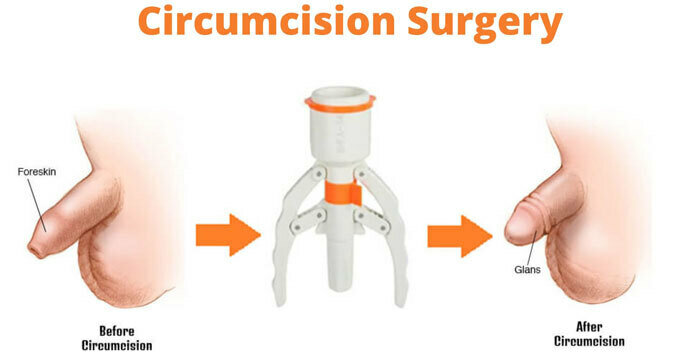Circumcision surgery is a procedure where the foreskin, the retractable fold of skin that covers the head (glans) of the penis, is surgically removed. This practice is primarily conducted for medical, cultural, or religious reasons and is one of the oldest surgical procedures known to humanity.
Medical Reasons for Circumcision:
- Hygiene: Removing the foreskin can make it easier to keep the penis clean, potentially reducing the risk of infections such as balanitis (inflammation of the glans) or urinary tract infections (UTIs).
- Prevention of Phimosis: Phimosis is a condition where the foreskin is too tight to retract over the glans, which can lead to discomfort, inflammation, and difficulty urinating. Circumcision may be recommended in severe cases.
- Reduction of Risk for Penile Cancer: Some studies suggest that circumcision can reduce the risk of penile cancer, although this disease is rare overall.
- Decreased Risk of Sexually Transmitted Infections (STIs): Research indicates that circumcision may reduce the risk of acquiring certain STIs, including HIV, herpes simplex virus type 2 (HSV-2), and human papillomavirus (HPV).
Procedure Overview: Circumcision surgery is usually performed by a trained healthcare professional, such as a pediatrician, urologist, or surgeon. The procedure can be performed under local anesthesia (numbing the area around the penis) or general anesthesia (where the patient is unconscious).
During the surgery:
- The foreskin is gently separated from the glans and then removed using a scalpel or a circumcision clamp.
- The remaining edges of the skin are stitched together with dissolvable stitches or adhesive glue.
- After the procedure, a protective dressing may be applied to the penis to promote healing and prevent infection.
Recovery and Aftercare:
- Mild discomfort, swelling, and redness are common in the days following circumcision.
- Pain relievers and proper hygiene practices are recommended to manage discomfort and reduce the risk of infection.
- It typically takes about one to two weeks for the penis to heal completely, during which time sexual activity and strenuous physical activities should be avoided.
Considerations:
- Circumcision is an elective procedure, and the decision to circumcise is often influenced by cultural, religious, and personal beliefs.
- The American Academy of Pediatrics (AAP) and other medical organizations recognize that the benefits of circumcision outweigh the risks, but they also stress the importance of informed parental decision-making.
In conclusion, circumcision surgery involves the removal of the foreskin from the penis and is performed for medical, cultural, or religious reasons. It is a relatively safe procedure when performed by a skilled healthcare provider and is accompanied by specific considerations for recovery and aftercare.





Comments